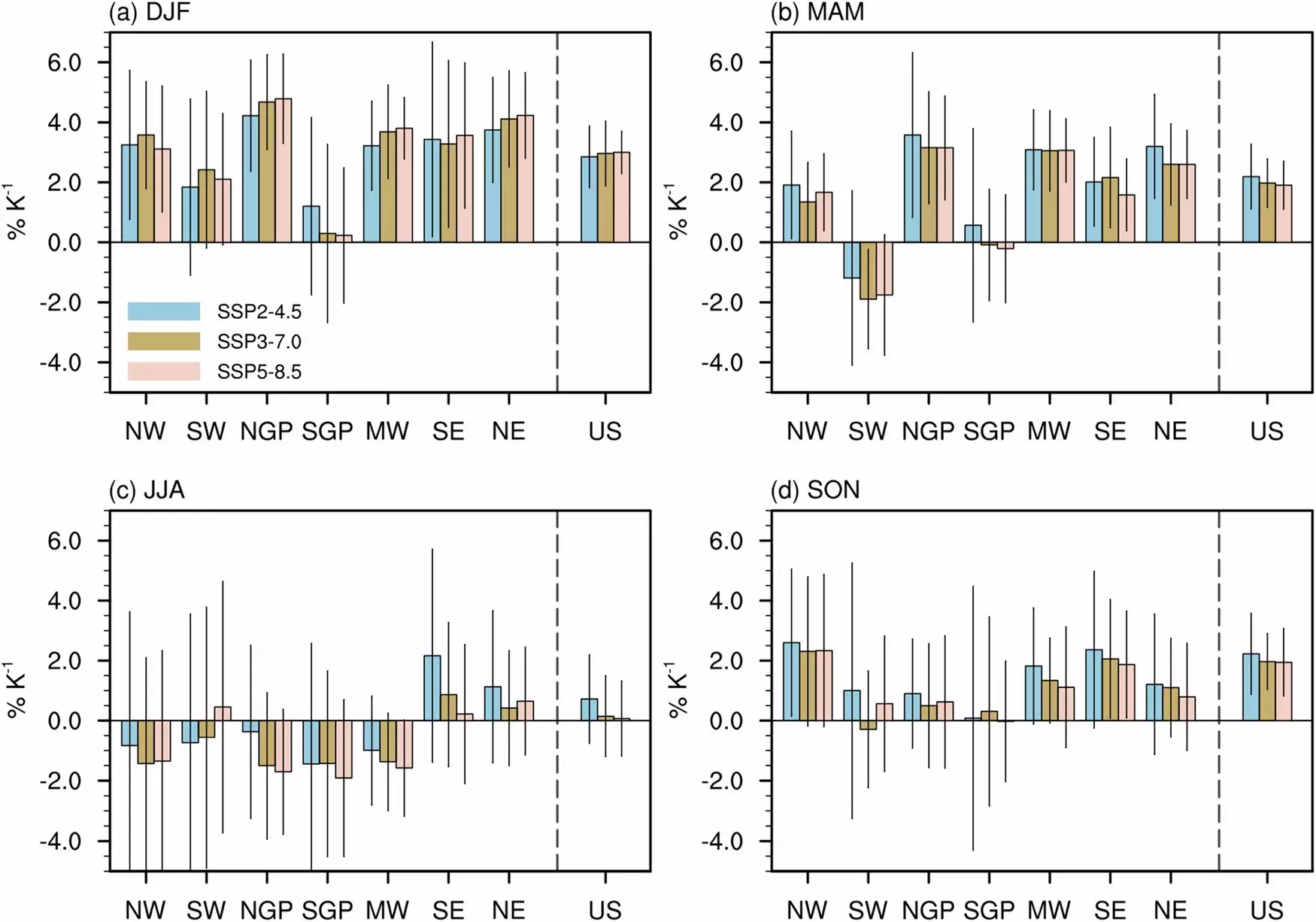The phenomenon of climate change is no longer a distant threat; it is actively reshaping weather patterns across the globe. Recent research spearheaded by a scientist from the University of Illinois Chicago, Akintomide Akinsanola, highlights a worrying trend for the United States: winters are projected to become significantly wetter. This article delves into the findings of Akinsanola’s study, exploring the implications these wetter winters will have on various sectors, including agriculture, infrastructure, and water management.
Utilizing advanced climate models, the research team analyzed how winter precipitation across the United States will evolve by the late 21st century. Their findings revealed a distinct increase in overall precipitation, as well as more frequent extreme weather events. Specifically, “very wet” winters—those falling in the top 5% of historical precipitation totals—are expected to occur once every four years in some regions by the century’s end. Such a shift represents a substantial change from current norms, particularly in areas historically characterized by drier winter conditions.
Akinsanola emphasized a crucial distinction within the findings: unlike the projected precipitation changes in summer and other seasons, the intensification of winter precipitation appears to be scientifically robust and is expected to exceed previously recorded historical data. This projection raises significant concerns about the long-term viability of current agricultural practices and water resource management strategies.
The study conducted a comprehensive analysis based on the seven U.S. subregions outlined in the National Climate Assessment Report. Overall, the research showed that nationwide, winter precipitation is anticipated to increase by 2%–5% for every degree of warming. However, regions such as the Northwest and Northeast are poised to experience the most dramatic changes in terms of absolute precipitation increase.
Interestingly, the research identified the southern Great Plains, encompassing states such as Texas and Oklahoma, as outliers where the projected shifts in precipitation are less pronounced and highly uncertain. Here, an expected rise in extreme dry spells could counterbalance the effects of increased wet events, indicating that the impacts of climate change will not be uniformly felt across the United States.
One of the most pressing concerns arising from these findings is the necessity for updating infrastructure to accommodate the expected increase in precipitation and associated extreme weather events. As rainfall becomes more frequent and intense, existing drainage systems may be inadequate to handle the volume, leading to flooding and damage to properties.
Akinsanola highlighted the urgency of these adjustments, stating, “We’re not just talking about an increase in average precipitation; we’re also talking about an uptick in extreme events.” This means that cities and municipalities will need to invest in modernizing facilities to reduce the potential negative impacts on communities, including severe flooding and storm-related damages.
The ramifications for agriculture are profound. Farmers depend on predictable weather patterns for planting and harvesting crops. The transition from snow to rain in many regions could disrupt growing seasons and reduce snowpack, which traditionally acts as a natural reservoir. This makes water accessibility increasingly unpredictable, posing challenges for irrigation and water supply management.
As winters become wetter and warmer, farmers will need to adapt their practices and crop choices, further entrenching the complexities introduced by climate change. Moreover, the increased frequency of extreme weather could exacerbate the risk of crop failures, pushing agricultural sectors to the brink and prompting potential food security issues.
In light of Akinsanola’s study, it is apparent that the United States is at the forefront of experiencing shifts in winter precipitation due to climate change. As we inch towards the end of the 21st century, it becomes increasingly essential to prepare for these changes through informed planning and infrastructural investments that anticipate the evolving nature of winter weather. Understanding the multifaceted impacts of wetter winters is critical not only for effective governance and resource management but also for the long-term sustainability of various sectors reliant on stable weather patterns. Without proactive measures and strategies, the consequences could reverberate across agriculture, economy, and infrastructure, affecting the resilience of communities nationwide.


Leave a Reply